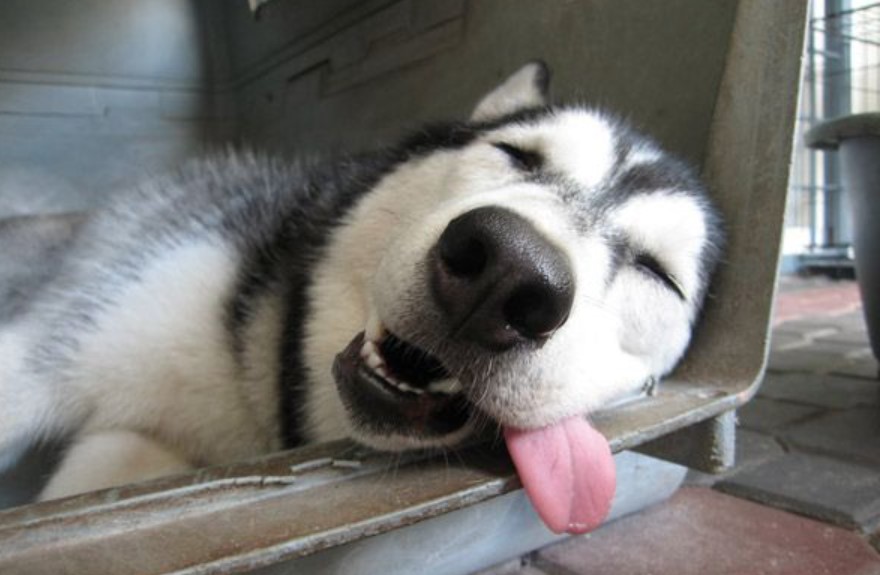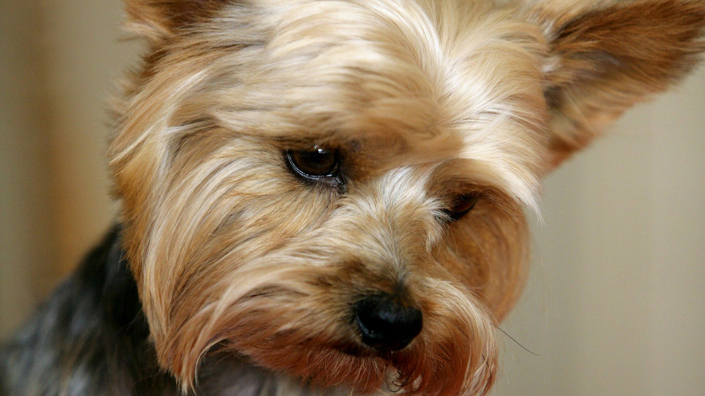Nothing is part of life like getting older. Of course, this does not only apply to us humans but also to dogs at some point in advanced age. In this article, you will find out what needs an old dog has and how an old dog changes over time.
Age in dogs – When is a dog old?

The oldest dog in the world was just over 30 years old. Unfortunately, this phenomenon is not granted to all seniors. Most dogs live between 10 and 15 years. As much as we would love to have our faithful companions with us for eternity, they too are getting a little bit older every day. But when is a dog an old dog?
As a rule of thumb, most dogs are considered old when they have lived to about 75% of their life expectancy. Likewise, smaller four-legged friends get older on average than larger ones. When the first signs of aging actually appear depends on the genetics and the breed of the dog. Not all breeds age the same.
How does the dog change with age?
An old dog goes through many changes. These include, for example, less activity, skin and coat changes, bladder weakness, loss of senses, and mental limitations. Dental problems and weight changes are also common.
Signs of aging: How an old dog changes
Unfortunately, age does not leave us unaffected. Like an old person, a senior dog will behave differently as they get older and will suffer from some of the signs of aging.
Fur and skin change
As dogs get older, their coat and skin change. Due to the fact that the pigment-forming cells in the skin increasingly die off, the hair becomes gray or white with increasing age. This process begins primarily in the area of the senior’s snout.
The properties of the skin also change. It becomes less elastic and more prone to injury. The body’s own production of skin fat also decreases. Because of this, dandruff or a dry, dull coat may appear. The dog’s paw pads and nose become calloused over time. Without the necessary care, cracks can develop here, resulting in pain.
Overweight

Like all living beings, dogs need to get enough energy from their daily diet. As a result, bodily functions are maintained and the weight remains stable. The energy in feed is measured in calories. If a dog takes in more calories than it needs, it stores the excess energy. It forms endogenous fat reserves and increases in weight. Conversely, it becomes thinner if it absorbs less than it uses.
An older dog burns fewer and fewer calories. On the one hand, this is due to the decrease in muscle and water mass. On the other hand, an old dog moves less. As a result, the feed rations should be adjusted. If this is not taken into account, the four-legged friend may become overweight and the risk of further diseases increases.
How does an old dog feel?
Old dogs often feel less energetic and sluggish than when they were young. He can become more clingy but also distance himself more from other dogs or people. In addition, disorientation, insecurity, and irritability are among the potential consequences of aging.
Decrease in mobility
An old dog will become less and less able to move. This is because the muscles and the bone and cartilage mass regress. The articular cartilage also loses more and more water. As a result, the joints are less supple and protected overall. Arthrosis is also possible in many cases. This occurs as a result of the continuous and painful destruction of aging articular cartilage. Dogs damaged by malpositions or stress are particularly susceptible to arthrosis.
In order to spare the four-legged friend such pain, arthrosis should be detected as early as possible. Then the senior can receive the necessary care and treatment. In any case, a veterinarian should be consulted. The following symptoms indicate such a disease:
- The dog relieves a specific leg
- Slower movement
- Getting up or sitting down becomes more difficult
- Joints are swollen
- Constantly changing sleeping positions
- Stiff range of motion after getting up
- Avoiding stairs and jumps
- Avoid stepping on raised objects (e.g. chair, bed)
- No interest in gaming or activity
- The dog will pant or squeak without strain
- Gnawing and licking of joints
Why Do Old Dogs Get Skinny?
Weight loss is not uncommon in older dogs. Older age brings with it a reduction in muscle mass and a regression of bone and cartilage mass. However, a noticeable rapid or high weight loss should be checked by a veterinarian. Avoid being underweight or overweight.
The senses fade away
Dogs are known for their fine senses. In old age, some of these abilities diminish. The ability to see is impaired by the increasing clouding of the eye lens. In addition, there is a weakening of the eye muscles as a result of general muscle atrophy. This is responsible for adapting the lens to the different lighting conditions. An old dog becomes more sensitive to light and less adaptable. The retina also becomes thinner. This layer at the end of the eye plays an important role in transmitting light stimuli to the brain. As a result, the eyesight decreases overall.
The ears of the elderly are also affected. As with us humans, a deteriorating sense of hearing with increasing age can hardly be avoided. For hearing loss, there are several clues to look for in dog behavior:
- The dog doesn’t seem to listen to commands
- No response to normally meaningful noises (e.g. doorbell, dog barking)
- He is startled when approached or touched from behind
- The dog sleeps deeper than normal
Bladder weakness

Incontinence is not uncommon in older dogs. Many older four-legged friends urinate unintentionally and uncontrollably. The weaker sphincter muscle of the bladder can no longer hold the urine and leaks under pressure. This often happens first while sleeping or while getting up. As a result, the problem often goes unnoticed at the beginning. However, there are a few signs to look out for:
- Wet residue or smell of urine at moorings
- Increased licking and brushing of the genital area
- Wet patches in the dog’s fur
Tooth & gum problems
Tartar builds up in dogs with age. This leads to increased inflammation of the gums. It is advisable to take good care of the dog’s teeth throughout its life in order to prevent such phenomena. The sooner the better.
If bacteria are in the spaces between the teeth, the periodontium is often affected. The result: damage to the jawbone. If left untreated, it can even lead to tooth loss. Permanent excessive exposure to bacteria from such gingivitis is also a constant danger for the dog.
Age in the dog – effects on mental abilities
Older dogs will not only deteriorate physically over time. Mental impairments can also occur. The nerve cells in the brain become more and more damaged over time. This often only reduces the ability of the dogs to learn and concentrate. However, the likelihood of suffering worse signs of aging increases with age.
Such severe limitations are called cognitive dysfunction and are similar to human dementia. This includes five areas in which older four-legged friends can experience major changes:
- Housebreaking wears off
- Restless sleep and frequent waking
- Disorientation in familiar surroundings or in the face of obstacles
- Activity changes: restlessness, lethargy, anxiety, less interest
- Attachment to people: Less interest, irritability, attachment
What’s good for old dogs?
Older dogs need, among other things, an adapted diet with less food and sufficient nutrients. In addition, the activity level should be reduced and intelligence games should be incorporated to maintain mental and physical fitness. Good care and loving affection are essential.
Age in the dog – tips for dealing with old dogs
Unfortunately, it cannot be avoided that our four-legged friends grow old. It is therefore important to prepare well for it. With a few tips, the lives of senior dogs can be significantly improved. This not only makes your dog happier in its last years, but you can also enjoy a satisfied companion.
Make the apartment safe for seniors
Not only puppies need protection in their young years. Older dogs come into a vulnerable phase of life again. Therefore, precautions should be taken to provide a safe environment for canine seniors.
The basket and lining should be easily accessible. Stairs and obstacles should be avoided. In addition, slippery floors can cause an old dog to fall if it becomes less stable. The interior design should also not be changed significantly in order to prevent potential disorientation. Familiar surroundings give seniors security.
Adjustment of diet
With increasing age, the metabolism changes in all living beings. As a result, a dog burns fewer calories. As a result, he needs less feeding to supply his body with energy and to maintain his weight. There is also special senior food that is adapted to the needs of older dogs. In case of doubt, the feed change can be coordinated with a veterinarian.
Mental & physical fitness
An old dog is of course not as fit as it was when it was young. He will have less energy and will need more frequent and longer breaks. Therefore, it is advisable to go a little shorter distances if the four-legged friend has to go out. Instead, you can walk more often and be prepared for the dog’s decrepit bladder.
In addition, one should not ignore the mental workload. Appropriate intelligence games keep the dog mentally healthy. However, you should give your four-legged friend enough breaks and not overwhelm him.
How do I know my old dog is dying?
When it’s time for your four-legged friend, there are a number of clues to look out for. For example, the dog withdraws, is listless, or does not eat. Also, shallow breathing, lack of coordination, and a weak heartbeat are not uncommon.
Contact with other dogs
Not every dog reacts in the same way to its peers. Some dogs will interact with others the same way they used to when they get older. However, the need for more distance and retreat can also increase. If the senior needs more distance in contact with other dogs, this can be expressed, for example, with a yellow bow on the collar.
Regular vet visits as the dog ages

If you sit in a waiting room, you will usually meet a few older people. As with our two-legged friends, regular visits to the doctor are recommended for older dogs. With the increasing probability of falling ill, prevention and control play an increasingly important role.
If you consider the tips and insights from this article, your canine senior will be able to enjoy a pleasant old age.



























